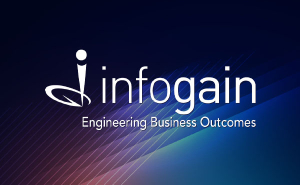- Posted on : January 11, 2022
-
- Industry : Corporate
- Type: News

The following is an industry article featuring Rajiv Naithani, that appeared in The Economic Times on 7 January 2022. Follow the link to read the original article.
We all love batting, right? Remember when we were kids playing cricket and some random “society uncle” showed up to profess his special techniques? We felt we didn't WANT it and the question of NEED wasn't there as, after all, it was the gully cricket. The only option left was to watch each other’s faces.
Now metamorphosis has its way! In India Inc, industry leaders feel two functions are plagued by the "I know best" syndrome from other people in management: HR and Marketing.
Someone explained it with an example: After all, no one tells the CIO what platform they should be buying, or the CFO what investments they should be making. But everyone at the C-level feels like they can provide input on HR because "I am also an employee after all". This often leads to HR plans being a mismatch of ideas, with no clear vision or implementation path.
But before we delve into the solution, let's take a back seat and see how these “inputs” find their place in shaking the plan for delivering a positive employee experience – a motto where there is at least 100 per cent consensus.
Felt too much “intrusion”
American economist Paul Krugman once vividly presented an idea: Salesman knows selling; cook knows cooking. In a Harvard Business Review (HBR) article, he captured how business people may not be able to run a country.
“Many people believe that someone who has made a personal fortune will know how to make an entire nation more prosperous,” he wrote. You get the idea, right?
Moving forward, People Strategy expert Neil Shastri feels most of the ‘advice’ from other functions comes during the planning or budgeting stage and takes one of two forms: either as strategic inputs on things like technology choice, user experience, etc or in the form of wanting very bespoke HR processes because “business knows its employees best”.
He further said in recent times that has taken the form of leaders in organisations, especially at the C-Suite level driving the conversation on things like hybrid working or return to the office.
“Except, these business leaders are often out of touch with the ground realities of the talent market and its demands, leading to attrition issues in the short term and affecting employer brands in the longer term,” said Shastri, who is a management consultant with over 15 years of experience and is currently Associate Partner at Aon.
A clear gap exists. An IBM Institute for Business Value (IBV) study revealed that C-suite executives now rank organisational complexity, inadequate skills and employee burnout as the top three greatest challenges their businesses will face in the next two years, but 84 per cent of CHROs say over the next two years they will prioritise agility and flexibility in the workforce.
Yet only 19 per cent of HR executives say their HR function has the proper business acumen or capabilities to do so.
In one of Ranjith Menon’s recent assignments, he came across a situation where there was too much “intrusion” from the operations department in redesigning the performance management system, especially on the software that the team was planning to adopt.
“While some of the suggestions were valid from an operational, day to day running of the process perspective, clearly the larger roadmap and the vision was lacking in most of the ‘suggestions’ received,” said Menon, Senior Vice President - Global HR of IT service management company Hinduja Global Solutions (HGS).
Menon said he had overcome this barrier by actively engaging with the business to communicate the larger vision and future roadmap more deeply. He said the fact that their “voice was heard” was a good sign that they took it positively – listening and buying into the larger vision and roadmap towards HR transformation.
But how often are these signs available to every HR leader, before landing employees into haywire situations? HR leaders say non-consensus leads to further confusion for the employees who need to go to one help desk for IT needs, another for payroll, a third for facilities, etc.
It may lead to Us vs Them
Rajiv Naithani, who is currently EVP and Chief People Officer of IT major Infogain, said it is a fact that HR cannot go to employees with half-baked information or have two different narratives from leadership.
“Such situations affect the trust and credibility in the leadership actions. It becomes difficult for HR to manage the conversation, and people at large find HR at fault for the ambiguity or inaction,” he feels.
Coming from the organisation development (OD) background, Naithani always believes in evolving hypotheses based on the diagnostic process to initiate the proper intervention for change.
“We had a problem statement around leadership capabilities in the organisation. To the change proposal to the key leaders, one of the leaders, as part of his critical approach, showed closedness, made generic statements and tried to push the personal opinions firmly,” he said.
It led to derailing the entire initiative, and the team lost a lot of productive time due to this.
Eventually, Naithani said the team adopted the same approach and moved forward with the successful execution.
Resource constraint, inadequate budget allocation to critical programmes, conflicting goals and uncertainty in the whole environment can be felt by employees, feels Subir Verma, Chief HR, IR & HS, Tata Power-DDL. “It is invisible but has a deep impact which is long term,” he said.
In Verma’s opinion, if we look for consensus, no change will ever take place. Expecting a consensus by all is illusionary. Citing an example, he said, “If we are at our home also, the mother asks everyone ‘what would you like for dinner?’ She keeps in mind everyone’s preferences and then ‘decides’ and everyone enjoys the meal happily.”
In its worst form, Shastri said it can lead to an us-vs-them culture within an organisation where one particular business unit may be seen as having better benefits, policies, or working models.
Nevertheless, Verma said that there are always some managers in the company who intrude in the name of suggestion and it may happen if HR is seen as the one who lacks thoughtful planning, fails to communicate expectations.
“The line needs to be firmly drawn by the HR leader, Verma said, adding, “You will get it, if you allow it. You will not, if you don't!”
Drawing the line
Experts say HR leaders need to have confidence and realise that they represent the employees and human ‘resources’ at the table and not be mere order takers. On the flip-side, Aon’s Shastri believes business leaders like data and insight.
“This is an area that HR often falls short in,” he said, adding, “The more specific and sophisticated your insights the better [your position is].”
Thirdly, Shastri added that business leaders like a plan with specific milestones, dates, and measurable outcomes.
“Oftentimes HR strategies sound like the right thing to do, but in the absence of establishing a Return on Investment (ROI) on the initiatives, the plans seem hollow,” he said.
Shastri suggested it starts with having an intimate understanding of how the business makes money and how every employee contributes to it. “And drawing a straight line between business goals and HR strategy,” he said.
To sum up
· Build confidence and draw the line,
· Get your data and insights specific, and
· Be ready with measurable outcomes
Understand the intention of the person in front
Sometimes some of the C-level executives show active interest and end up contributing much more than the rest in defining and shaping the initiative outcomes and process, feels Menon of HGS.
In such situations, he suggested it is important for HR to keep the end goal in mind and navigate the discussions in such a manner that the end outcome and its sanctity are maintained at all times.
“For this, it is absolutely important to gain agreement upfront on the expected and desired outcomes, without which there is a high chance that we may end up with different outcomes and end goals at the end of discussions,” Menon said.
Most importantly, he advised HR should listen and understand what is spoken and what is “unspoken”. “It is also useful to understand the comments and their underlying reasons for which they are made by some of the executives - if you observe more closely, most of the time these are arising out of their insecurities and resistance to change,” he added.
To sum up
· Welcome the discussions and maintain sanctity,
· Gain agreement upfront on the expected outcomes, and
· Listen to what is “unspoken”
Working in isolation is not the key
Naithani of Infogain believes sometimes, these budget decision-makers bring rationales and reasoning away from the ground realities. “Empathy and people's sensitivities are completely lost in the name of business imperatives or business acumen,” he said.
Having supportive data and enrolling them on the right cultural behaviours may help manage the expectations of such leaders, Naithani suggested.
But the practical issue with such leaders is that no input can be regarded as invalid. Hence, he said some executive leadership folks tend to give all kinds of suggestions and perspectives.
Nevertheless, the HR veteran said since we live in a world of collaboration, people's intervention will not help address the real need on the ground if designed in isolation.
“Brainstorming sessions, including the inputs and constructive feedback, really helps in enriching the overall strategy and execution plan around the change,” he said, suggesting, “At the same time, the CEO should support HR leaders in driving the change interventions in the company.”
To sum up
· Designing solutions in isolation is not the key,
· Enrol executives on the right cultural behaviours, and
· Expect support from C-suite executives
Realise it is an HR and not a “Super HR” function
Between the “my way” and “highway” approach, there is always a “path-breaking way”, as per Verma, Tata Power-DDL.
He feels it is a Human Resource and not a “Super Human Resource” function. “We too have limitations like any other function and we need to leverage experience and inputs of others to have the best strategy for the company and employees,” he added.
If C-Level executives' input is at a strategic level, Verma said it should be taken positively as they too have a big picture view. But he added if the inputs are at the micro-level, then HR leaders should have balanced and open-minded discussions on inputs to convince or get convinced to move forward.
Further, he said there will be some leaders who are agenda-driven and see these opportunities to score points over others or polish their image.
“They need to be explained from their point of view to ensure even these people support you,” he said.
To sum up
· Realise, you are HR and not “Super HR”; so, take advantage of collaboration,
· Identify the level of inputs: strategic or micro, and
· With persuasion and patience, convert intruders into admirers







